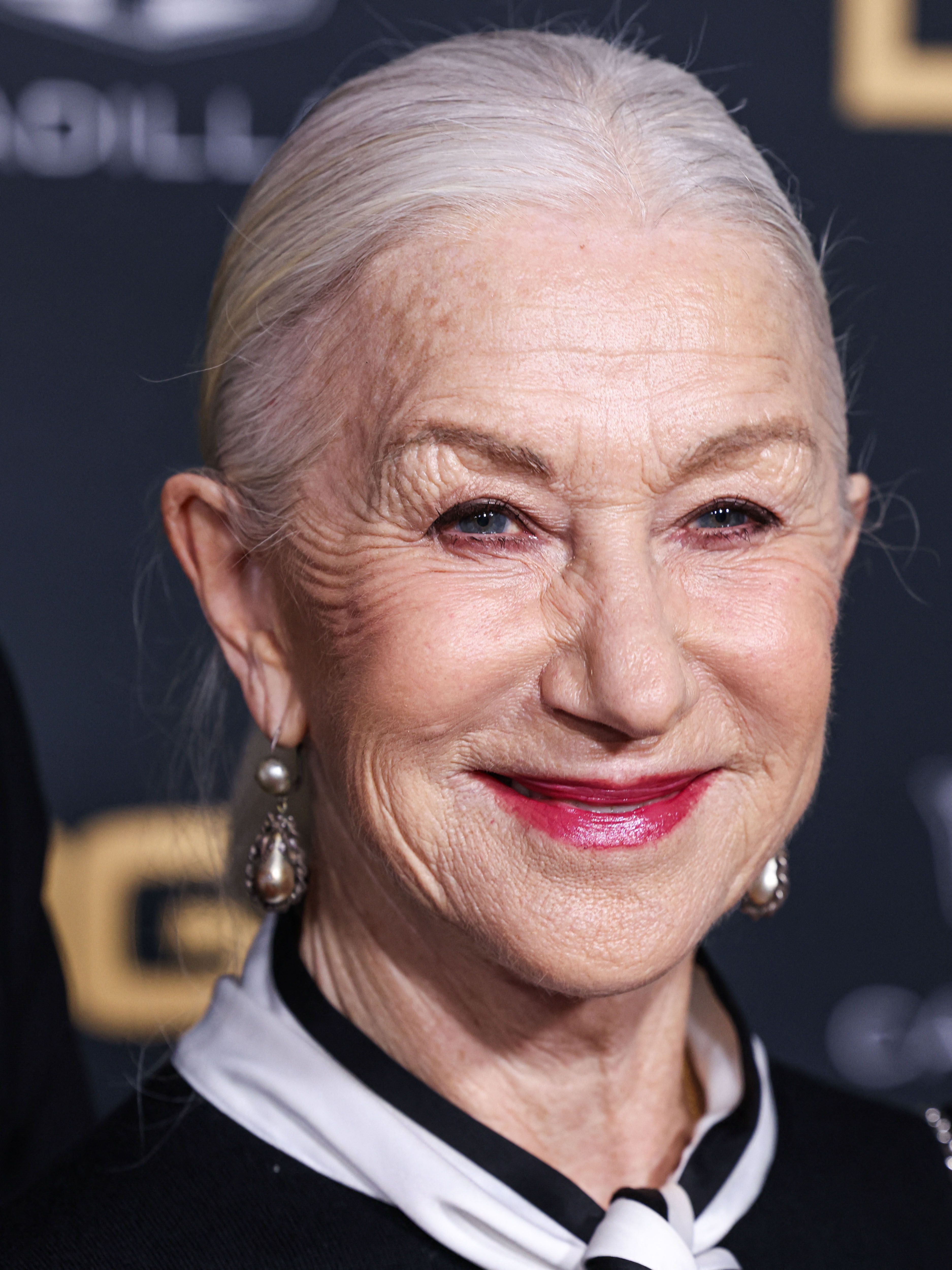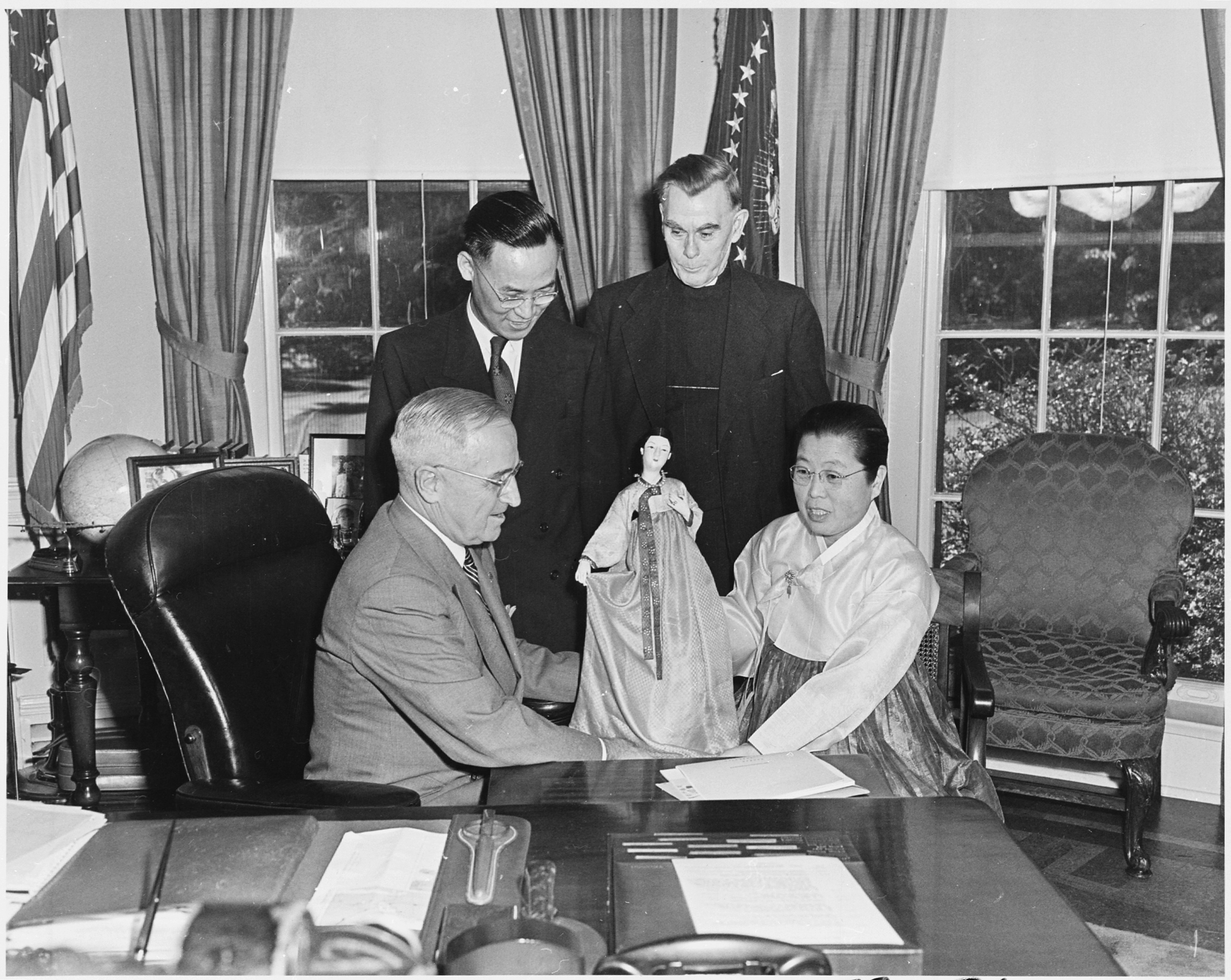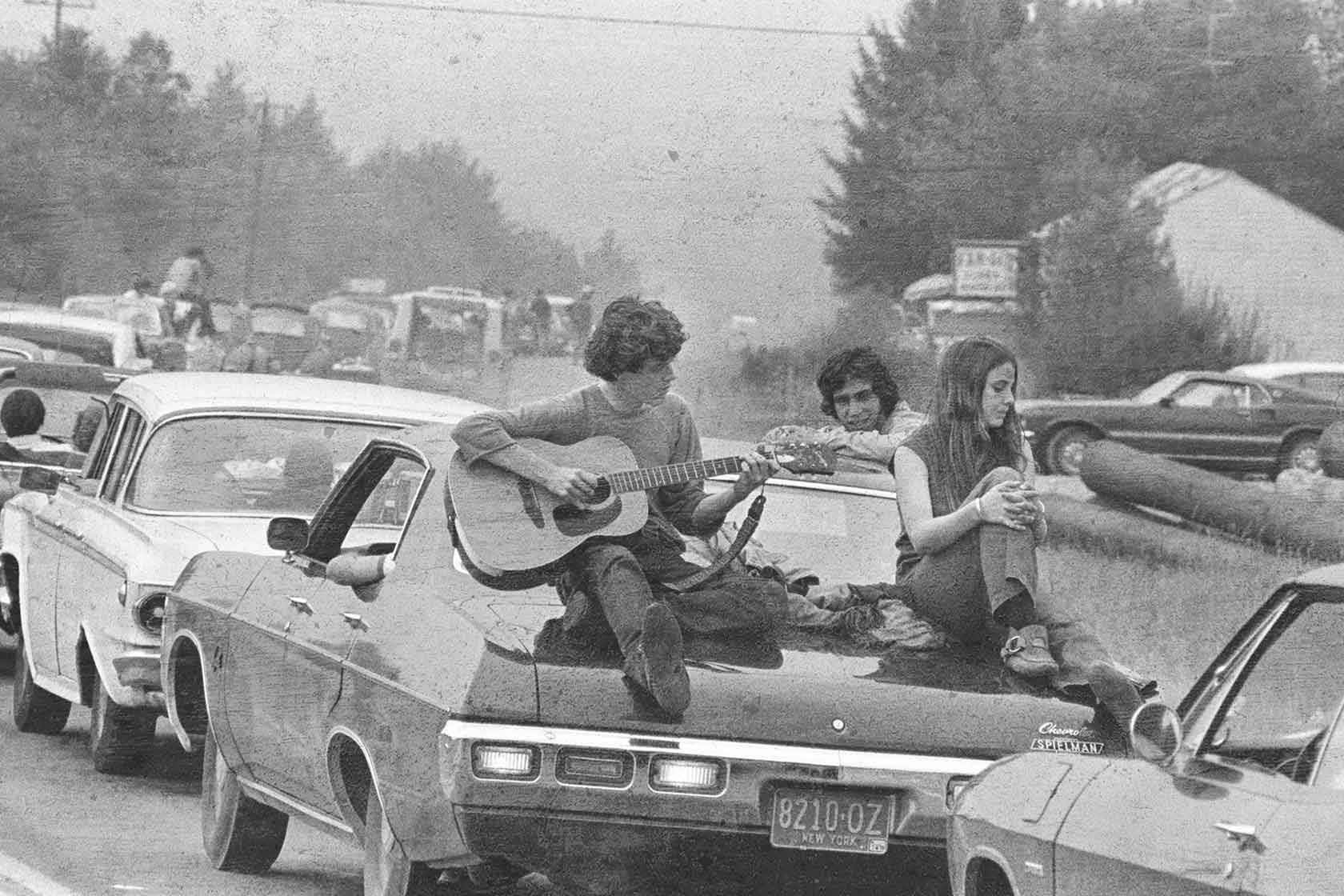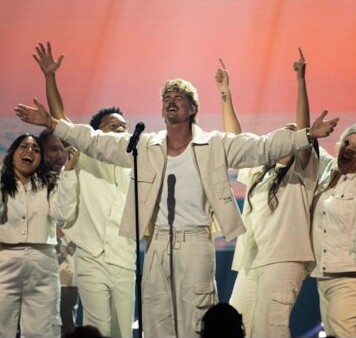
The theatrical world recently mourned the passing of Helen Gallagher, an American actress, dancer, and singer whose illustrious career spanned more than seven decades on both stage and screen. Ms. Gallagher, a two-time Tony Award winner and three-time Daytime Emmy Award recipient, died on November 24, 2024, in New York City at the age of 98, leaving behind a profound legacy of versatility, resilience, and unwavering dedication to her craft.
Her extraordinary journey saw her evolve from a ballet dancer in Broadway choruses to a celebrated principal performer, a leading lady, and eventually a beloved television matriarch. With a remarkable array of accolades that also included a Donaldson Award and a Drama Desk Award, Ms. Gallagher consistently captivated audiences with her unique blend of comedic timing, dramatic depth, and exceptional song-and-dance prowess. Her passing marks the end of an era for many who witnessed her dazzling performances and felt the impact of her enduring presence in the performing arts.
This article aims to provide an in-depth look at the remarkable life and career of Helen Gallagher, illuminating the pivotal moments and roles that defined her path to stardom and cemented her status as a true legend of American entertainment. We will explore her formative years, her foundational experiences on Broadway, and the early triumphs that set the stage for a career characterized by both immense talent and profound perseverance.
1. **Early Life & New York City Roots**Born Helen Hudson Gallagher in Brooklyn, New York, on July 19, 1926, her early life was marked by both geographical shifts and personal challenges that would undoubtedly shape her resilient spirit. While her birthplace was the bustling borough, she spent her formative years navigating different environments, being raised in both Scarsdale, New York, and the vibrant, diverse landscape of the Bronx.
Her childhood was further complicated by the separation of her parents, Charles, a banker, and Helen (Hudson) Gallagher, a bank clerk, whose financial difficulties during the Great Depression led not only to the loss of their home in Scarsdale but also to their eventual divorce. In the wake of these familial changes, Ms. Gallagher was raised by an aunt, a foundational experience that instilled in her a sense of independence and adaptability from a young age.
Despite suffering from asthma, a condition that might have deterred others, Helen Gallagher harbored a fervent desire to dance from her earliest years, with a particular ambition to grace the Broadway stage. Her dedication to this dream led her to begin studying at the prestigious School of American Ballet as a teenager. Initially shy, she required “prodding from ballet school friends” to even audition for what would become her first professional engagement, a testament to the internal drive that propelled her forward throughout her career.
Read more about: Charlie Sheen’s Net Worth: From $150 Million TV Icon to a $3 Million Reality – A Deep Dive into His Dramatic Financial Journey and Comeback Efforts

2. **Broadway Beginnings: ‘Seven Lively Arts’ and ‘Brigadoon’**Helen Gallagher’s professional journey on Broadway commenced in 1944, at the tender age of 18, when she made her debut in the chorus of Cole Porter’s revue, “Seven Lively Arts.” This initial experience, alongside her work as a corps de ballet member, marked the very beginning of a stage career that would remarkably span seven decades, establishing her presence in the demanding world of live theater.
Her early years in the ensemble saw her contribute to various productions, including “Mr. Strauss Goes to Boston” in 1945 and “Billion Dollar Baby” in 1946, where she also served as a chorine, dancer, and neighbor. These roles provided her with invaluable experience, honing her skills in a competitive environment and preparing her for increasingly prominent parts. It was during this period that she began to cultivate the versatility that would become a hallmark of her performances.
One particularly memorable early experience involved working with the renowned choreographer Agnes de Mille in “Brigadoon.” Ms. Gallagher recalled that de Mille “nearly fired her” in 1947, explaining, “Agnes wanted very lyrical work, and I’d just done ‘Billion Dollar Baby’ and everything came out bumps and grinds.” Despite this initial challenge, de Mille later offered Ms. Gallagher unexpected praise, sending her an orchid on opening night of a subsequent revival of “Oklahoma!” in 1958 with a note declaring, “You are truly a star,” a testament to Gallagher’s growth and the impact of her evolving artistry.
3. **The ‘Big Break’: Nancy in ‘High Button Shoes’**While her initial Broadway engagements provided crucial experience, Helen Gallagher’s true breakthrough arrived in 1947 with her role as Nancy in the musical “High Button Shoes.” This pivotal performance, beginning in October 1947, was instrumental in her career, effectively “catapulting her from the chorus to the world of principal roles” and marking a significant turning point in her trajectory on the New York stage.
In “High Button Shoes,” Ms. Gallagher delivered a performance that immediately captured attention, particularly her portrayal of the “Charleston-crazed Nancy.” A highlight of her time in the production was a memorable and “humorous tango with Paul Godkin as their characters were learning the dance.” This particular number was so impactful that it earned a thunderous response from the audience.
Ms. Gallagher herself vividly recounted the enthusiastic reception to their performance, stating on a theater podcast, “We stopped the show.” She further elaborated on the moment’s significance, noting that it had an unexpected side effect, making the star of the show, Nanette Fabray, “jealous of the audience’s attention.” This anecdote underscores the undeniable charisma and talent that Ms. Gallagher exhibited, even in her early principal roles, marking her as a performer destined for greater recognition.

4. **First Tony Win & Donaldson Award: Gladys Bumps in ‘Pal Joey’**In 1952, Helen Gallagher achieved significant critical acclaim and received her first major awards for her compelling portrayal of Gladys Bumps in the revival of the Richard Rodgers-Lorenz Hart musical “Pal Joey.” This role, as the “bitter chorus girl,” showcased her exceptional ability to infuse complex characters with depth and humor, earning her widespread praise from theater critics and audiences alike.
In the production, Ms. Gallagher starred opposite Harold Lang as the notorious, womanizing nightclub owner Joey Evans, and Vivienne Segal. Her character, Gladys Bumps, became entangled in a “revenge scheme” against Joey Evans, orchestrated by herself and a mobster, adding a layer of dramatic intrigue and dark comedy to the narrative. Ms. Gallagher’s performance in this intricate plot was noted for its intensity and nuanced delivery, demonstrating her burgeoning skill as a dramatic actress.
The critical reception for her work was overwhelmingly positive. John Chapman, reviewing the show for The Daily News, lauded Ms. Gallagher as a “natural born imp, who can dance anything, be very funny and sing.” Her dynamic performance resonated with the Tony Award committee, leading to her winning the Tony Award for Best Featured Actress in a Musical that year. Additionally, her stellar work in “Pal Joey” was further recognized with a Donaldson Award in 1952, solidifying her position as a rising star in the Broadway firmament.

5. **Leading Lady Debut: Hazel Flagg**Following her triumphant Tony Award win for “Pal Joey,” Helen Gallagher quickly ascended to her first leading role on the Broadway stage, starring as the title character in “Hazel Flagg” in 1953. This significant achievement, just a year after her Tony, cemented her status as a formidable talent ready to carry a major production and showcased her versatility as a performer.
“Hazel Flagg” was a “screwball musical comedy” based on the 1937 Carole Lombard movie “Nothing Sacred.” The plot revolved around a young woman who unexpectedly gains widespread fame when she is mistakenly believed to be gravely ill from radium poisoning. Ms. Gallagher’s performance as the “eponymous media darling” allowed her to demonstrate a broader range of her comedic and dancing talents, confirming her capability to command a central role.
Brooks Atkinson of The New York Times, in his review, highlighted Ms. Gallagher’s continued prowess, observing that the actress, “who was inflaming ‘Pal Joey’ until quite recently, is now igniting the title part, especially when the plot lets her go into one of her spinning dances.” Despite the critical acknowledgment of her performance, the show itself did not achieve long-term success, closing after 190 performances. Ms. Gallagher herself candidly referred to the production as “a flop,” illustrating the unpredictable nature of Broadway even for acclaimed performers.
6. **The Resilient Performer: ‘The Pajama Game’ and ‘Portofino’**Even after the relatively short run of “Hazel Flagg,” which Ms. Gallagher candidly acknowledged as a “flop,” her resilience and demand in the Broadway community remained evident. She swiftly returned to the stage, demonstrating her remarkable adaptability by taking on a replacement role in the highly successful musical “The Pajama Game” in 1955, stepping into the part previously held by Carol Haney.
In “The Pajama Game,” Ms. Gallagher embraced the role of Gladys Hotchkiss, described as the “quick witted secretary.” This part allowed her to further showcase her comedic timing and strong stage presence, proving her capability to maintain momentum and perform effectively in a variety of productions. Her ability to seamlessly integrate into an ongoing show and make the role her own was a testament to her professional versatility.
However, not every venture would mirror the success of “The Pajama Game.” Ms. Gallagher later starred in the musical “Portofino,” which unfortunately “shuttered after three performances in 1958.” This brief run underscored the inherent risks of theatrical productions, even for seasoned performers. Despite such setbacks, Ms. Gallagher’s unwavering commitment to her art saw her continue to hone her skills, singing in clubs and taking dancing lessons during her subsequent absence from Broadway stages, an interim period that only strengthened her resolve for future triumphs.

7. **Tony Nomination & Star Turn: Nickie/Charity in ‘Sweet Charity’**After nearly a decade’s absence from the main Broadway stage, Helen Gallagher made a highly anticipated return in 1966, originating the role of Nickie in the Bob Fosse-choreographed musical “Sweet Charity.” This pivotal role saw her portray a dancer who is the loyal and insightful best friend to the titular character, Charity Hope Valentine, initially played by the legendary Gwen Verdon.
Ms. Gallagher’s performance as Nickie garnered significant attention and critical praise, earning her a Tony Award nomination for Featured Actress in a Musical. Her ability to imbue the character with both humor and heartfelt depth made her a standout in a cast filled with formidable talent, marking her successful comeback to the forefront of Broadway after a period away from new productions.
Her connection to “Sweet Charity” deepened further when she eventually assumed the title role of Charity, replacing Gwen Verdon in 1967 and later taking the show out on tour. Reviewing her performance as Charity, Vincent Canby of The New York Times noted that Ms. Gallagher “sings and dances with undiminished vitality” and praised her interpretation as “sweeter, more realistic, less eccentric” than Ms. Verdon’s. This demonstrated her capacity not only to create a memorable supporting role but also to embody a leading character with her own distinct and compelling artistry.
8. **Second Tony Triumph: Lucille Early in ‘No, No, Nanette’**After a period of significant achievement and a Tony nomination for ‘Sweet Charity,’ Helen Gallagher reached a new pinnacle in her Broadway career in 1971 with her acclaimed portrayal of Lucille Early in the revival of the 1920s musical classic, ‘No, No, Nanette.’ This role was widely considered the ‘star turn that many critics thought she had long deserved,’ marking a triumphant moment that solidified her status as a leading figure on the American stage.
Her performance as the ‘glamorous grand dame’ Lucille Early garnered universal celebration, earning her a second Tony Award for Best Actress in a Musical, alongside a Drama Desk Award. A particular highlight of the production was her dynamic song-and-dance number with Bobby Van, “You Can Dance with Any Girl,” which became exceptionally popular. Rex Reed, in his review for The Daily News, famously noted that Ms. Gallagher and Mr. Van “turn ‘No, No, Nanette’ into Technicolor,” further adding, “When they dance, the carpets burn.”
The undeniable impact of their performance was further underscored by its inclusion in both the 1971 and 1972 Tony Awards telecasts, where Gallagher and Van recreated the dazzling number for a national audience. Ms. Gallagher’s triumph in ‘No, No, Nanette’ was so profound that she was, for a time, credited as one of the “great harbingers of Broadway’s revival boon,” signaling a resurgence of interest in classic musicals. Her poignant acceptance speech at the Tony Awards, delivered after receiving the statuette from Lauren Bacall, articulated a message of collective perseverance: “This award is to all of us that have stuck in a business, maybe long after anybody wanted us. Stuck because we didn’t know what else to do — no imagination — stuck because we had to stick. It’s for us that stick.”
9. **From Broadway to Television: Early Ventures and the Dawn of a New Era**Even as her stage career reached new heights, Helen Gallagher’s journey also saw her venture into the burgeoning world of television, a medium that would eventually introduce her to an entirely new generation of admirers. As early as 1949, she demonstrated her versatility by co-hosting ‘Manhattan Showcase,’ a 15-minute talent-discovery program on CBS television. This early foray into broadcasting signaled a willingness to adapt to the evolving landscape of entertainment.
Her early dramatic television appearances included a role as Lise in the ‘Hallmark Hall of Fame’ episode ‘Shangri-La’ in 1960 and a guest appearance on ‘The Bell Telephone Hour’ in 1961, dedicated to ‘The Music of Richard Rodgers.’ These engagements allowed her to explore different facets of her acting talent beyond the musical stage, reaching audiences in their homes. Such television work, alongside guest spots on programs like ‘The David Frost Show,’ gradually expanded her public profile.
Simultaneously, Ms. Gallagher also began to explore opportunities in film. In 1960, she appeared in ‘Strangers When We Meet,’ a notable film starring Kirk Douglas and Kim Novak. This period highlighted a growing trend among Broadway performers to diversify their careers, often out of a pragmatic need for consistent work. As Ms. Gallagher herself would later articulate, the “lack of stage roles and the need to support herself” often propelled her to seek employment in other mediums, showcasing her adaptability and professional resilience.
Read more about: Ruth Buzzi, the Acclaimed Comedic Actress and ‘Laugh-In’ Star, Dies at 88
10. **The Matriarch of ‘Ryan’s Hope’: Maeve Ryan’s Enduring Appeal**Despite her extensive and celebrated work on Broadway, Helen Gallagher is arguably best known to a vast segment of the American public for her indelible portrayal of the Irish matriarch, Maeve Ryan, on the ABC soap opera ‘Ryan’s Hope.’ From its debut in July 1975 until its conclusion in January 1989, Ms. Gallagher breathed life into the character for the show’s entire 13-year duration, becoming a beloved and iconic figure in daytime television.
Her casting as Maeve Ryan marked a significant turning point, bringing her unique blend of dramatic depth and grounded realism to the small screen. The show centered around Maeve and her husband Johnny (Bernard Barrow), who owned Ryan’s Bar, a cornerstone of their American Irish family in New York City, located directly across from a hospital. Ms. Gallagher’s presence grounded the narrative, providing a maternal force that resonated deeply with viewers and anchored the series’ intricate storylines. It is noteworthy that Michael Hawkins, who played the first Frank Ryan on the show, was one of Ms. Gallagher’s singing students at the time she was cast, illustrating a fascinating connection between her professional endeavors.
Ms. Gallagher consistently expressed immense pride in her work on ‘Ryan’s Hope,’ valuing the continuity and artistic fulfillment it provided. In a 1985 interview with The New York Times, she stated, “It gives me continuity in the thing that I chose to spend my life doing. I’ve done things on the show that I would be proud to put up against anything I’ve ever done onstage.” She elaborated on the show’s quality in a 1997 interview, remarking, “Ryan’s Hope was the best. First of all, it was a half-hour show — wonderfully cast and wonderfully written.” She praised its realism, noting, “It wasn’t just a matter of sitting around on couches talking about your emotional problems. There was a life going on in that place, maybe because it was centered on a bar. It was just magic.”

11. **Critical Acclaim and The Poignant Farewell of ‘Ryan’s Hope’**Helen Gallagher’s performance as Maeve Ryan was not only adored by audiences but also garnered significant critical recognition, solidifying her standing as an accomplished dramatic actress in television. Over her tenure on ‘Ryan’s Hope,’ she received five Daytime Emmy Award nominations for Outstanding Lead Actress in a Drama Series, triumphing in 1976, 1977, and again in 1988. These accolades underscored her ability to imbue Maeve with a compelling blend of strength, vulnerability, and Irish charm, making her one of the most respected figures in daytime television.
She particularly valued the depth of the show’s writing, recalling powerful dramatic moments that rivaled her stage experiences. “I remember having a speech over my son’s deathbed. It was absolutely O’Casey,” she shared, referring to the renowned Irish dramatist Sean O’Casey. Such nuanced storytelling allowed Ms. Gallagher to demonstrate the full range of her dramatic capabilities, proving that serialized television could offer profoundly moving performances.
However, as the 1980s progressed, ‘Ryan’s Hope’ faced declining ratings, which eventually led ABC executives to cancel the series in 1989. The show’s creator and head writer, Claire Labine, penned a deeply emotional final episode, concluding with Maeve at the family bar, singing “Danny Boy.” This poignant scene, a tradition during the show’s St. Patrick’s Day episodes, provided a heartfelt and memorable farewell to a character that had become a part of millions of viewers’ daily lives. As the credits rolled, Ms. Gallagher added her own gentle parting words, “Have a good life,” a sentiment that resonated deeply with her devoted fanbase. Almost immediately following the cancellation, Ms. Gallagher demonstrated her ongoing demand by making guest appearances on other daytime dramas, including a two-day stint on ‘Another World,’ and roles as a strict nurse on ‘All My Children’ and a sex therapist on ‘One Life to Live.’

12. **Beyond Maeve Ryan: Diverse Television and Film Roles**While Maeve Ryan remained her most celebrated screen role, Helen Gallagher’s career beyond ‘Ryan’s Hope’ reflected her enduring versatility and dedication to her craft across various mediums. Following her extensive run in daytime television, she continued to make notable appearances, showcasing her ability to adapt to different characters and genres. Her guest stints on ‘Another World,’ ‘All My Children,’ and ‘One Life to Live’ allowed her to explore new characters in the soap opera landscape, moving from a beloved matriarch to a strict nurse or a sex therapist, demonstrating her range and capacity for transformation.
In the 1990s, Ms. Gallagher also ventured into popular prime-time dramas, guest-starring on critically acclaimed series such as ‘Law & Order’ and ‘The Cosby Mysteries.’ These roles offered her opportunities to engage with more complex, self-contained narratives, further cementing her reputation as a formidable character actress capable of making a significant impact even in brief appearances. Her ability to seamlessly move between different television formats underscored her professionalism and the high regard in which she was held by casting directors.
Beyond the small screen, Ms. Gallagher also graced the cinematic world with her presence. In 1977, she appeared in James Ivory’s acclaimed film ‘Roseland,’ set in the iconic New York City ballroom and featuring a cast that included Geraldine Chaplin and Christopher Walken. Later in 1997, she starred in the independent LGBT-themed drama film ‘Neptune’s Rocking Horse.’ These film roles, though not as extensive as her stage or television work, showcased her continued artistic engagement and her readiness to embrace diverse storytelling opportunities, solidifying her legacy across both mainstream and independent cinema.

13. **A Dedicated Educator: Helen Gallagher at HB Studio**Throughout her illustrious performing career, Helen Gallagher nurtured another profound passion: teaching. Beyond the footlights and studio cameras, she dedicated a significant portion of her later life to mentoring aspiring artists, cementing her legacy not only as a performer but also as an invaluable educator. Ms. Gallagher worked for many years as an acting instructor at the Herbert Berghof Studio, famously known as HB Studio, in New York City.
Her commitment to education extended beyond formal institutional settings; she also served as a private singing instructor, teaching voice and acting lessons from her Manhattan apartment. At HB Studio, she specifically contributed as an instructor of Singing for the Musical Theater, sharing her vast practical experience and deep understanding of the craft with new generations. Her dedication to her own continuous growth was evident in her practice of studying weekly with HB Studio Master Teacher Uta Hagen, reflecting her belief in lifelong learning and artistic development.
The impact of Ms. Gallagher’s teaching was profound and far-reaching. Her students benefited immensely from her firsthand knowledge of Broadway and her rigorous approach to performance. In recognition of her significant contributions and her enduring influence on countless students, HB Studio honored her by naming one of its classrooms after her in 2020. This gesture stands as a testament to her lasting legacy as a compassionate and impactful mentor, ensuring that her insights continue to shape the future of performing arts.
14. **Later Stage Appearances and Continuing Presence**Even amidst her celebrated television career and her dedicated work as an educator, Helen Gallagher maintained an active and cherished presence on the stage, a testament to her unwavering love for live theater. Her adaptability and talent ensured she remained in demand for various productions, both on and off Broadway. In 1981, she returned to Broadway to replace Ann Miller as the co-star alongside Mickey Rooney in the musical revue ‘Sugar Babies,’ demonstrating her capability to step into an ongoing hit production and make it her own.
Further showcasing her versatility, Ms. Gallagher took on the title role in ‘Tallulah,’ a musical stage biography of the iconic actress Tallulah Bankhead, in 1984. This challenging part allowed her to delve into another larger-than-life character, adding to her rich repertoire of stage performances. She also continued to appear in numerous Off-Broadway productions, including ‘I Can’t Keep Running In Place,’ ‘The Misanthrope,’ ‘Electra,’ ‘Red Rover Red Rover,’ ‘The Gingerbread Lady,’ and ‘Hothouse,’ embracing diverse and often experimental theatrical works.
Ms. Gallagher’s final Broadway appearance occurred in January 2000, when she starred as Gert in the York Theatre Company revival of ’70, Girls, 70.’ This role, coming at the age of 73, underscored her remarkable longevity and her sustained passion for the stage, bringing her seven-decade Broadway career to a fitting close. Her final recorded stage performance, playing Mother in ‘Home’ at the Ensemble Studio Theatre in June 1996, further highlighted her commitment to continuous artistic engagement right up to the turn of the millennium.
Read more about: A Perilous Miscalculation: When Pirates Attacked the Unyielding Power of Warships and Faced Swift Defeat
15. **A Legacy of Resilience and Versatility**Helen Gallagher’s passing on November 24, 2024, at the age of 98, marked the end of an extraordinary life devoted to the performing arts, leaving behind a profound and multifaceted legacy. Her career, spanning seven decades, was characterized by unparalleled versatility, remarkable resilience, and an unwavering dedication to her craft. From her beginnings as a ballet dancer in Broadway choruses, she evolved into a celebrated principal performer, a leading lady, and eventually a beloved television matriarch, accumulating an impressive array of accolades including two Tony Awards, three Daytime Emmy Awards, a Donaldson Award, and a Drama Desk Award.
Her journey was not without its challenges, including the unpredictability of Broadway success and the necessity of seeking work across different mediums to sustain her artistic life. Yet, it was this very perseverance that she celebrated in her second Tony Award acceptance speech. She spoke not just for herself, but for “all of us that have stuck in a business, maybe long after anybody wanted us. Stuck because we didn’t know what else to do — no imagination — stuck because we had to stick. It’s for us that stick.” This eloquent articulation of an artist’s enduring spirit encapsulates her own remarkable career.
In her later years, Ms. Gallagher remained actively engaged, not only through her final stage and screen appearances—such as her 2009 role as an expert on ‘American Masters’ discussing Jerome Robbins—but also crucially through her impactful role as an acting instructor at the Herbert Berghof Studio. Her influence lives on through the countless students she mentored, carrying forward her wisdom and passion for the performing arts. Her marriage to Frank Wise ended in divorce, and she was later partnered with actor Gardner Brooksbank for approximately 40 years until his passing in 2019.
Read more about: Igniting the Digital Engine: 12 Rare Creations That Still Command Gaming’s Respect
Helen Gallagher’s life story is a compelling narrative of immense talent coupled with an indomitable spirit. She captivated audiences with her unique blend of comedic timing, dramatic depth, and exceptional song-and-dance prowess across every stage and screen she graced. Her contributions enriched American theater and television, and her inspiring commitment to her art will undoubtedly continue to resonate with future generations of performers and enthusiasts alike. She leaves an indelible mark on the landscape of performing arts, a true legend whose presence will be deeply missed but whose legacy will endure.











